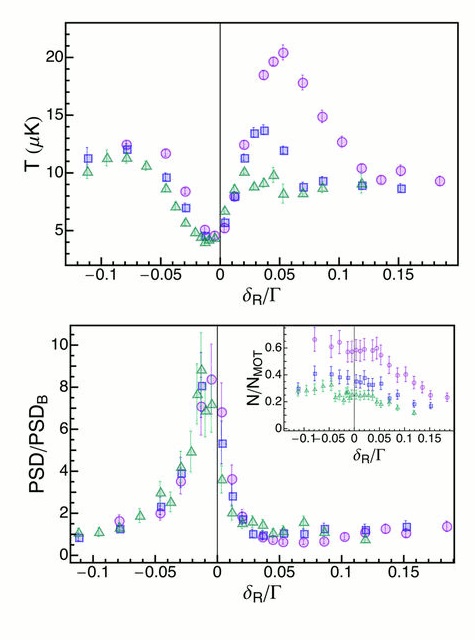 |
Laser cooling based on dark states, i.e. states decoupled from light, has proven to be effective to increase the phasespace density of cold trapped atoms. Dark-states cooling requires open atomic transitions, in contrast to the ordinary laser cooling used for example in magneto-optical traps (MOTs), which operate on closed atomic transitions. For alkali atoms, dark-states cooling is therefore commonly operated on the D1 transition nS1/2 → nP1/2. We show that, for 87Rb, thanks to the large hyperfine structure separations the use of this transition is not strictly necessary and that “quasi-dark state” cooling is efficient also on the D2 line, 5S1/2 → 5P1/2. We report temperatures as low as (4.0 ± 0.3) μK and an increase of almost an order of magnitude in the phase space density with respect to ordinary laser sub-Doppler cooling. S. Rosi, et al. |


Considering the hurdles of experiments with more than one atomic species, the temptation arises of rephrasing Arthur L. Schawlow: "Double-species Bose-Einstein condensates are condensates with one species too many". We think otherwise. Quantum mixtures allow the investigation of a wealth of genuinely quantum phenomena: mixed phases of superfluids and Mott insulators, impurities and polarons, chemistry at zero-temperature.
